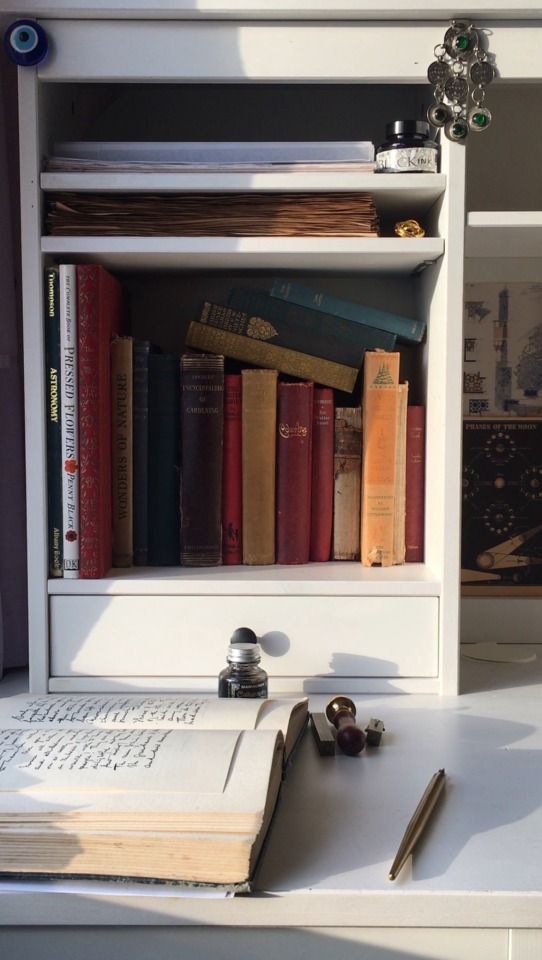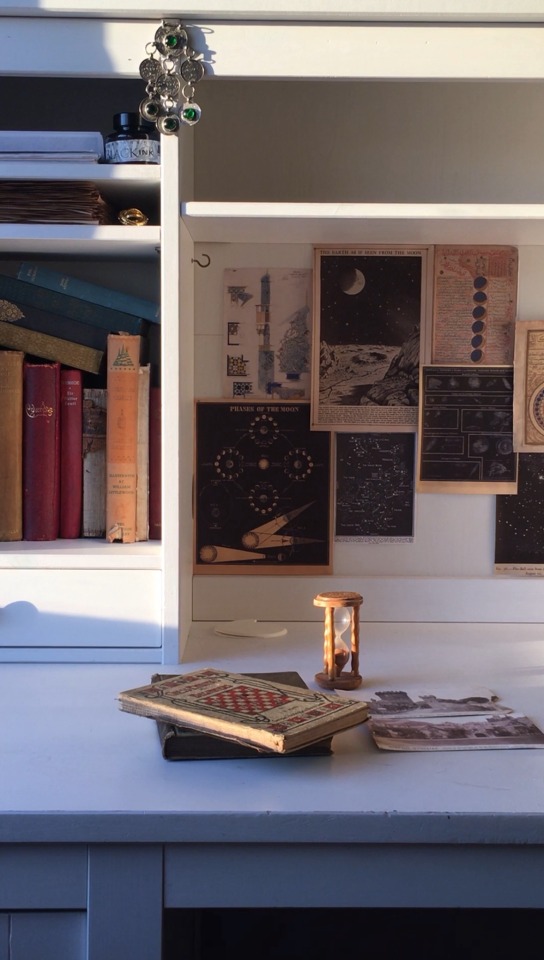Latest Posts by csmsdust - Page 2


Surface display of the various structures that play a role in either coloring (e.g. valence circuits) or encoding (interoceptive and cognitive circuits) emotional awareness states source



My desk in October 2021


today’s study || happy first day of classes!!!
Integration and competition between space and time in the hippocampus

Mouse brain labeled using the brainbow technique. Brainbow is a technique used to distinguish individual neurons using different-colored derivatives of GFP (green fluorescent protein). By Dr. Tamily Weissman-Unni.



9.9.2024.




x






@academia-lucifer


Swiss Brassy Ringlet (Erebia tyndarus), family Nymphalidae, found in the Alps of Europe
photos by böhringer friedrich & Clarisse Dayer Micheloud




Orache moth, Trachea atriplicis, Noctuidae
Photographed in France by Matthieu Berroneau
Shared with permission; do not remove credit or re-post!


Model bisections of human head- Science Museum, London


Starting uni again + honorable mention, my support animals








Feels like summer 23.07.2024.


cognoscit


7.08.2024. Thinking tools




Hunter gatherer, prying open the seeds, got curious enough, started peeling its own skin, digging underneath, born with scars on your hands, stardust, sun sent, the first flesh you ever tasted, your own, folded flesh underneath the bone, and two eyes gazing in oblivion, oblivious of obvious
Work on a scientific article
What it actuallly entails:
Come up with an idea, define an interesting problem
Do thorough literature research. Maybe similar stuff was already done. Define the knowledge gap well.
Plan in detail, how we can solve the problem, design experiments
Reach out to potential collaborators, agree with them on a plan
Buy necessary equipment, chemicals
Do pilot experiment, optimize the conditions to get reliable data
Perform experiments, calculations, make everything multiple times so it's reliable
Analyze the data
Urge collaborators to deliver their parts
Coordinate your progress with the collaborators
Manage the collaborations, organize meetings
Be diplomatic, you don't want to make enemies in academia
Agree with direct colleagues, who worked on it, what will be the message of the article. Will it be a long story and we need to add some more data? Or will it be short and right to the point and we write a short "letter"?
Do literature research again. Maybe new stuff appeared, and for sure your data must be confronted and discussed with already known facts.
Write the first draft of the article
Send it around for feedback, first only to direct colleagues from your lab
Incorporate the feedback, maybe do more experiments and more analysis
Rewrite the manuscript
Send it around the second, third, fourth, fifth... time
Incorporate the feedback
Send the manuscript to all collaborators.
Wait for the feedback, urge everyone to give it, maybe you don't have all data from all the collaborators yet
Incorporate feedback
Prepare the manuscript for journal submission
Get approval from all co-authors
Submit the manuscript
Wait for editor response, hopefully they send it to reviewers. If not, you need to rewrite a bit the article to adhere to the new journal's format and send somewhere else.
Get reviewers' reports, deal with them, reply truthfully, make effort to explain everything even if you know that the reviewer's suggestion is just impossible or irrelevant. Be diplomatic.
Maybe you need to do an additional experiment, analysis, or rewrite a major part fo the manuscript. This can take months.
Submit revised manuscript with all the changes
Wait for editor's nad reviewers' comments in the second round. You can get many rounds of review and still get rejected.
Finally get a "Congratulations, your manuscript has been accepted for publication"
Pop a shampagne! You deserve it!
What part of this do you usually do in different career stages:
BSc. and MSc. students: Perform experiments and analyze data
PhD students: Do all the experimental and analysis parts, write the manuscript, discuss with their supervisor and direct colleagues, incorporate feedback. But does not have to come up with their own idea and manage collaborations and diplomacy.
Postdocs: Do literally everything on the list
Group leader/Professor: Do the thinking and managing parts, help with writing and feedback, provide discussions and insight. Do not perform actual experiments and analysis.
Being a postdoc is the transformation between the student and the group leader.
As such, we just have to do all these tasks. It's stressful. It's challenging. It's definitely not boring. I am taking every opportunity to get a student, who can help with the experimental repetitions so I have time for all the other stuff.

The books I'm reading at the moment.

Meditations by Marcus Aurelius - I love this book. It puts you in the perspective of the time and space you occupy, I found a lot of my own thinking and feelings within the pages of this book. A guy born in AD 121 has very clear view on life that is still relevant today.

Great Adaptations by Kenneth Catania - A professor of biological sciences takes you on a journey with him while he studies various animals adaptive abilities. Star nosed moles, electric eels, tentacled snakes... Very interesting insight in how these creatures evolved and adapted.

What we cannot know by Marcus du Sautoy - Explains concepts from the ground up, I like the illustrations that accompany the text and practical examples. Lays foundations to the known and wonders into the future of research and the possibilities that come with it as well as limitations. Covering themes from quantum physics and cosmology to sensory perception and neuroscience.

Labyrinths of reason by William Poundstone - "Blue sky, sunshine, deja vu glazed with dread." How do you know this isn't all a dream? Is anything certain? Ontology, logic, mathematics, deduction, epistemology, memory formation, paradoxes and puzzles.

A brain for numbers by Andreas Nieder - Humans' understanding of numbers is intuitive. How are infants able to perceive numbers even before they learn the words for them? How do our brains process numbers? Can animals count? He shows how it is an adaptive ability and that plenty of animals have the number sense too. There is a variety of research and supporting evidence mentioned which I really like.




Birthday presents ✨️

By tracking mRNA scientists can view chemicals within the brain creating memories for the first time.
(x)
Light photons, which make up the world around us, were observed inside a vacuum. Their natural locations were completely random.
Human DNA was then inserted into the vacuum. Shockingly the photons were no longer acting random. They precisely followed the geometry of the DNA.















